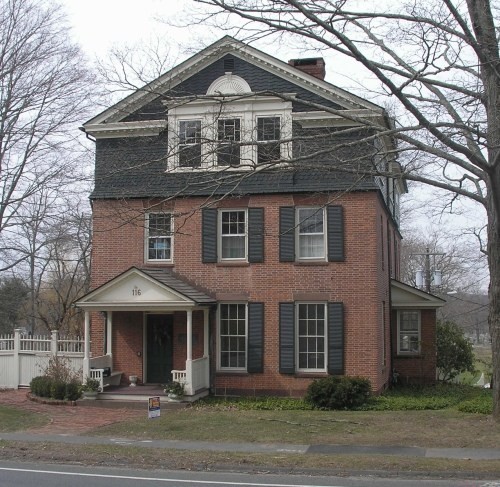Reverend Noah Porter House
Introduction
Text-to-speech Audio
Images
The Noah Porter House is part of the Farmington Freedom Trail.

Backstory and Context
Text-to-speech Audio
In 1839, 53 kidnapped Mendi Africans rebelled against their Spanish slave-trader captors aboard the Amistad. The surviving Africans would go on to win their freedom in the United States Supreme Court. While they raised funds to return to present-day Sierra Leone, they found refuge in the town of Farmington, Connecticut, the history of which is represented via the Farmington Freedom Trail.
Noah Porter served as the minister of the First Church of Christ from 1806 to 1866. From his pulpit, he would preach against slavery despite anti-abolitionist factions within the church. He and his family housed a young girl, Margru, from the Amistad ship during the Mende's stay in Farmington. Margru would later return to the United States to attend Oberlin College; she was the only member of the Amistad Africans to return the country after their return to Sierra-Leone.
Sources
Noah Porter House, National Parks Service. Accessed October 17th 2020. https://www.nps.gov/places/noah-porter-house.htm.
The Reverend Noah Porter House (1808), Historic Buildings of Connecticut. Accessed October 17th 2020. http://historicbuildingsct.com/the-rev-noah-porter-house-1808/.
http://historicbuildingsct.com/the-rev-noah-porter-house-1808/
